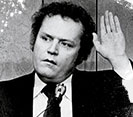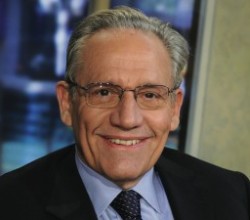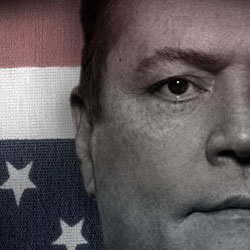Deadly Cycle
HOW VIOLENCE THRIVES IN THE MIDDLE EAST
by Simone Wilson, reporting from Israel and Gaza
It’s one of the world’s most elusive holy grails: lasting peace between Israelis and Palestinians. From a distance the conflict seems absurd. But for the people who live it day to day, the reasons are as real as life and death. As deadly exchanges again flare up, our reporter explores why the emotional wounds on both sides refuse to heal.
The bombs over the Gaza Strip—a small stretch of Mediterranean scrubland along the western coast of Israel, about one-third the size of Los Angeles—often seem to materialize from thin air. In seconds an Israeli F-16 has swooped down over its target, let go its missile with a gut-splitting noise and opened up the earth below into a thunderous well of smoke, flames and flying concrete. After the boom, it takes the people on the ground a few moments to realize if they’re dead or alive—if the guy who was sitting next to them is now on the floor with a shard of glass through his skull, or if the sounds of bloody hysteria are coming from farther off, somewhere across war-torn Gaza City.
“It’s like you’re dying in every second,” says Khader al- Kurdi. The 21-year-old college student has lived through four wars and many more small conflicts, the most recent of which stretched over one week in November 2012, leaving over 150 Gazans lifeless under the rubble. But the worst of the violence, recalls al-Kurdi, came in the winter of 2008 when Israel launched Operation Cast Lead. Tanks and soldiers roved the streets and F-16s bombed from above, killing about 1,400 Gazans in three weeks of fighting. The experience “charged me with hate toward Israel,” says al-Kurdi.
RECURRING NIGHTMARE
Just a few miles off, in southern Israeli towns such as Sderot and the Sha’ar Hanegev Regional Council (a collection of liberal farming communes called kibbutzim), civilians have 15 to 45 seconds to find a bomb shelter at the first scream of an air-raid siren.
As residents brace for one of Gaza’s homemade Qassam rockets to hit, these slow-motion moments of pain anticipation are their own special brand of torture. “When there’s an alarm, and all the kids are outside, they’re running just like ants,” says a sixth-grade teacher at Sha’ar Hanegev Elementary School. “In a few seconds the field is empty. It’s like a trigger. They’re all programmed to be playing and happy and dancing and skipping, and within one second they switch into emergency mode.”
The Israel Defense Forces (IDF) estimates that Hamas—the U.S.- classified terrorist organization that rules Gaza—has hurled more than 8,000 rockets over the fence since Hamas took power in 2006, killing 60 and injuring hundreds more.
If a rocket isn’t intercepted by the IDF’s advanced “Iron Dome” airdefense system before coming to earth, its random trajectory ensures that no space is safe and no mind at ease. Windows explode, homes shake on their foundations, and shrapnel zings across the gardens of Sha’ar Hanegev’s many kibbutzim. “It looks like a big arrow with fire, and when it bombs, it blocks your ears,” says Gal, an 11-year-old student at Sha’ar Hanegev Elementary who recently saw a rocket fall in his grandma’s front yard. A rocket killed a young boy in the back of a Sha’ar Hanegev school bus in April 2011; and another killed community hero Jimmy Kdoshim, a father of three who was known to drop lollipops to local kids as he flew over the farmland on his parachute.
The children of Sderot and Sha’ar Hanegev have heard stories about terrorists getting loose from Gaza on foot too. “I have a recurring nightmare that a man in a keffiyeh [Arab headdress] breaks into the window and shoots me,” says Eliav, 11.
ULTIMATE ROADBLOCK
Kids on both sides, when instructed by their parents and headmasters to sit straight in their chairs and speak with the nice American journalist, recite that they don’t hate the people on the other side of the wall and that they only want peace. But it’s apparent that their mistrust for each other runs deep.
“We educate for peace and mediation and coexistence,” says Sha’ar Hanegev principal Anat Regev. “But here it’s not so simple because they were born into this situation. They’ve been bombed all the time. You cannot take it for granted that they will want peace.”
Yael Tzalka, an American teaching volunteer at a junior high in Rishon LeZion—which a Hamas rocket narrowly missed in November 2012—observes that “a lot of these kids are liberalminded but really fed up at the same time…. Some of them end up being like, ‘Just kill them all.’ They’re like, ‘Why do we have to go through terrorism?’”
A recent study showed that almost 45% of seventh- and eighth-graders in the Israeli border town of Sderot show signs of posttraumatic stress disorder (PTSD) due to the constant threat of rockets. And in Gaza, researchers say the PTSD rate has shot up to almost 70% among high-school students who live in the region’s heavily bombed refugee camps.
Eyad El-Sarraj, one of Gaza’s most respected scholars and doctors, has described this endless cycle of psychological trauma as the ultimate roadblock to peace. After Operation Cast Lead he noted in a New York Times op-ed that “Palestinian children in the first intifadah [uprising] 20 years ago threw stones at Israeli tanks trying to wrest freedom from Israeli military occupation. Some of those children grew up to become suicide bombers in the second intifadah ten years later.” El-Sarraj added, “It does not take much to imagine the serious changes that will befall today’s children.”
ANGRIER GENERATION
Although they have likewise seen unthinkable war atrocities in their day, most elderly residents of Gaza and Israel—and those in the larger Palestinian West Bank—at least have a firsthand understanding of the enemy. They remember a time when Israelis and Palestinians worked alongside each other in factories, when they shook each other’s hands to close business deals, when a one-state solution didn’t sound like an absurd joke.
“We want to live in peace,” insists Gaza City resident Majed al-Kurdi, 49. “I want my son to be able to live, to work, to visit America and visit Israel.”
But his eldest son interjects. “No, I don’t want to,” says Khader. “He wants. I don’t. How can the place who stole your land give you peace? I don’t know how.”
With a few exceptions, historians and older residents in Israel and the two Palestinian territories agree that the younger generations are getting angrier—and, in effect, taking a more conservative attitude toward the Israel-Palestine conflict.
The wounds of Operation Cast Lead had hardly healed in Gaza—its children were still mourning their classmates, still playing in the rubble of bombed-out skeleton buildings—when Israel decided to “mow the lawn,” as conservatives have dubbed it, again in November 2012. (According to the IDF, the attack was in response to 100 Hamas rockets aimed at southern Israel over a 24-hour period.)
“I hate them,” says Ariel, an 11-year-old Israeli girl whose hometown of Be’er Sheva came under attack during the conflict. She compares the feeling of watching Hamas military commander Ahmed al-Jabari get blown up by an Israeli missile to the joy that Hansel and Gretel felt upon pushing the witch into the oven.
Adel, a clean-cut ten-year-old walking the streets of Gaza City, says he was friends with the al-Dalou family, who lost 11 members—including four children—when their home was turned into a massive crater by Israel during the 2012 operation. Asked if he could say one thing to the Israelis, Adel crosses his arms and declares, “I want to fight you.”
RIPPED TO SHREDS
Oftentimes the only interactions between Israeli and Palestinian youth are angry, impersonal exchanges over the Internet—where one’s humanity is reduced to a profile pic. “On social networks such as Facebook and YouTube, [Israelis] share their bad opinions, and I can read it and feel how they feel about us,” says Khader al-Kurdi.
In December 2012, when a young Israeli woman serving her mandatory time in the IDF shot Mohammed Salima at a checkpoint in the West Bank after the 17-year-old allegedly pulled a toy gun on a fellow border policeman, Palestinians and their supporters ripped her to shreds on the Internet. They passed around a link to her reported Facebook profile—which, like those of most women her age, was filled with duck faces and bikini shots—and labeled her a “terrorist,” “bitch,” “Zionist whore” and “child killer.”
Just days after the cease-fire, at a bar in Tel Aviv (Israel’s secondlargest and most modern city), a charismatic twentysomething wearing lit-up devil horns starts spitting Arabic like a party trick. His friends and observers snicker, calling it the “nigger language.” Probe another partygoer about the Gazan children who died during the 2012 conflict, and he’ll tell you that while they may look cute, in the end they’re just “suicide bombers in training.”
Over tea and coffee at her family’s home in Gaza City, 18-year-old Samar al-Kurdi—whose baby cousin was fatally crushed during Operation Cast Lead—asks, “How can I have an Israeli friend if the people in Israel hate the Palestinians?” Her little brother begins dancing around in the driveway, singing a popular new song from Egypt called “I Love Israel.” The ironically titled tune plots out various ways to destroy the land of the Jews—such as pouring gasoline on it or hanging it from a noose.
NATIONALISTIC EDUCATION
Psychologists have found that those exposed to war traumas often resort to simple, good-guy-bad-guy storytelling to make themselves feel better. “When you are being attacked, the main challenge of society is to cope with the situation,” says Dr. Eran Halperin, an Israeli professor who studies the causes of political extremism. “And the ultimate way to cope with the situation is to create a very, very clear and one-sided story to justify the fact that we have to be in this situation.”
Dr. Rony Berger, another Israeli psychologist, adds that “people exposed to trauma and who develop PTSD are more likely to adopt anti-democratic extreme measures against anybody that is not like themselves.”
In the case of Israel and the Palestinian territories, experts say that the two populations’ lack of exposure to one another, combined with societal influences like war propaganda and a nationalistic K-12 education, is contributing to each side’s increasingly us-versus-them mentality.
“Education in Israel today is very far from a peace-loving education,” says Mordechai Bar-On, an Israeli historian who once served as chief education officer for the IDF. “Even if it’s not extremely right-wing, which it sometimes is, even the normal schooling system is overtly nationalistic and overtly pessimistic.”
The mandatory draft for all Israeli men and women over 18 may serve to strengthen this early surge of patriotism, breeding a country of hardened soldiers. “For the majority of the people, after being exposed to the typical Israeli education, military service has a negative impact,” Bar-On explains. “It tends to fortify your patriotism— your belief that only a strong hand can solve your problems, that you have to defend yourself, that the Arabs are no good, that the Arabs are primitive people, etc.”
Nir, a 24-year-old student in Be’er Sheva, attests that after serving in the IDF, he became more supportive of the Israeli government. “When you are serving, you see things differently than when you are a civilian,” he asserts. During his time as a guard in the West Bank, Nir says he heard crazy stories about Palestinian extremists from fellow soldiers and saw that they weren’t going to give up until they took back Israel from the Jews.
STATE OF TRAUMA
The education system in Gaza is likewise getting a heavy dose of Islamist extremism under Hamas rule. And there are many to influence: Over half the population of Gaza is under the age of 15.
German TV journalist Richard Schneider, who has done extensive reporting in the Palestinian territories, says that at a recent Hamas rally he witnessed some supporters “take their children, put plastic guns in their arms, give them plastic suicide belts, call them shaheeds and everything’s wonderful. Many of the kids are educated that this is something good.”
Yusef—a cherubic Gazan five-year-old in a shirt that reads, “Experts agree that you are an IDIOT”—pokes his head out from behind his father and pretends to fire his toy machine gun at the visiting American. His family says he became so frightened during the recent conflict that he would sob during the night and had to sleep in his parents’ bed.
“If they keep on fighting us, I am going to let Yusef fire rockets toward them,” says his father, Shaban al-Kurdi.
Whereas Israel has the resources and priorities to patch up rocket damage as quickly as it appears, Gaza’s wounds have been left to flap in the wind. Little reminders of the occupier’s wrath pop up everywhere: empty window frames whose glass was blown out by an F-16; daily power outages resulting from both war damage and the blockade of natural resources; a little girl’s Mary Janes poking from the rubble of her family home.
Mohamed, another member of the al-Kurdi family, says that two of his friends from school, along with his Arabic teacher, were killed in the most recent Israeli bombings. “They didn’t do any bad things to make Israel kill them,” the 16-year-old says, his knee jiggling compulsively. He seems especially upset about the bombing of Gaza’s central soccer stadium, a popular spot for games and concerts that Israel claimed was being used as a launching point for Hamas rockets.
So Mohamed was proud when the rockets finally hit Tel Aviv—a record distance for Hamas—in November 2012. In an assignment for his English class, he wrote: “For the first time in war history, the resistance shelled the capital of Israel, Tel Aviv city, and Israelis escape to shelter like mouse.”
Psychologists say that strong feelings of hatred and aggression— of grouping the other side into one big evil entity as a defense mechanism—spike during wartime, when fear and trauma run high.
During the November violence, Gaza freelancer Wasseem El-Sarraj—the son of Dr. Eyad El-Serraj—documented his own hardening to peace in the pages of The New Yorker. “It’s my first harb (war), and it has stirred in me feelings that I had tried hard to suppress,” wrote the journalist. “I never wanted to see Israel as an evil force. I said to myself that that sort of thinking, that sort of emotion, would not be helpful, would not be constructive, would not be ‘me.’ I had wanted to work with Israelis; to reconcile, I suppose. After four years of living in Gaza, this has become an untenable position for me.”

















